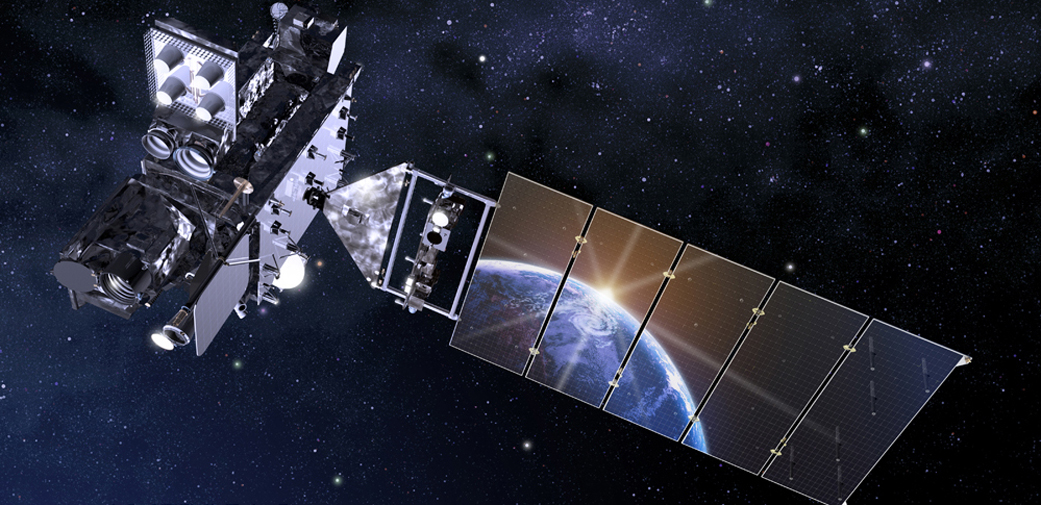Flash, Bam, Alakazam: Lightning-Detecting Satellite Also Spots Meteors

There are plenty of phenomena that light up the night — and it turns out that the same type of detector fortuitously catches two very different types of celestial fireworks.
One of those phenomena is lightning: Because bolts can spark wildfires, scientists and engineers at NASA designed a satellite-mounted monitor that maps lightning strikes from space. But scientists who track how Earth's atmosphere destroys meteoroids have confirmed in new research that they can piggyback on those detectors.
Peter Jenniskens, an astronomer at NASA and the SETI Institute and lead author of a new paper describing the research, studies these dramatic explosions. "If you've ever seen one of these events, they are spectacular," he told Space.com. But he isn't just enjoying the light show; he's worried about planetary protection. That means he wants to know as much as possible about which asteroid characteristics trigger which impact characteristics. [Pieces of 'Fireball' Meteor Found in Botswana]
That requires studying as many impacts and their remains as possible, hence the appeal of a space-bound detector that could send scientists alerts about incoming asteroids. Such an alert system would improve the chances that researchers could gather impact debris for analysis, Jenniskens said.
That's still far in the future, but the new research suggests scientists have come a step closer, thanks to an instrument called the Global Lightning Mapper. The National Oceanic and Atmospheric Administration's GOES-16 and GOES-17 (formerly called GOES-R and GOES-S) weather-monitoring satellites each carry a GLM, and the technology is due to fly on the next two satellites in the series — which will eventually be called GOES-18 and GOES-19 and are scheduled to launch in the early 2020s, as well.
But the GLM is tailored to lightning strikes, measuring only a single wavelength of light that's produced by oxygen atoms during a strike, Jenniskens said. That means it can see lightning even during daylight, but at the cost of ignoring a ton of other data. So while scientists had hoped that the GLM would pick up meteoroid explosions, they couldn't be sure until they had some data to check. That became possible early this year, after GOES-16 had been watching the sky for almost a year and its observations could be compared with reports of incoming meteoroids from a network of Department of Defense satellites.
Jenniskens and his colleagues could identify the spectacular ends of 10 meteors in the GLM data. The system turns out to register impacts brighter than the full moon, which correlates to small asteroids between about 4 and 40 inches (10 centimeters to 1 meter) across. Those impacts are more dramatic than a meteor shower but much too small to cause significant damage.
Get the Space.com Newsletter
Breaking space news, the latest updates on rocket launches, skywatching events and more!
Matching up those incidents proves that if scientists can make the most of the GLM data, they should eventually be able to identify otherwise-overlooked impacts in the lightning detector's observations, Jenniskens said.
"It will take a while to really dig in and try to see if we can actually identify the bolide [meteor] signatures from the lighting," he said. Incorporating other observations, like whether there are clouds in the region, may be key to making the system more powerful, he added.
And while they aren't new events, the GLM observations still offer scientists new information in the form of light curves for each impact, which trace how much light was produced over time. Jenniskens said he was particularly surprised that different impacts created different light shows — some with dramatic flaring and dimming, and others with much steadier burns. That's probably related to an asteroid's composition and structure, which would affect how it falls through the atmosphere, he said.
Those are difficult properties to measure in space, but tracking individual asteroids and their re-entry displays could help scientists begin to connect those dots. "Maybe we'll learn in time to predict how a particular asteroid would break apart in the atmosphere," Jenniskens said.
The results of the initial project are described in a paper published July 16 in the journal Meteoritics & Planetary Science.
Email Meghan Bartels at mbartels@space.com or follow her @meghanbartels. Follow us @Spacedotcom, Facebook and Google+. Original article on Space.com.
Join our Space Forums to keep talking space on the latest missions, night sky and more! And if you have a news tip, correction or comment, let us know at: community@space.com.

Meghan is a senior writer at Space.com and has more than five years' experience as a science journalist based in New York City. She joined Space.com in July 2018, with previous writing published in outlets including Newsweek and Audubon. Meghan earned an MA in science journalism from New York University and a BA in classics from Georgetown University, and in her free time she enjoys reading and visiting museums. Follow her on Twitter at @meghanbartels.









